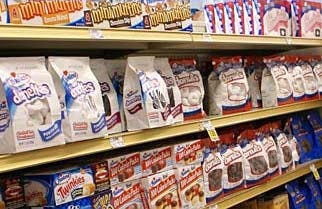Eye tracking can provide insight into packaging-design choices
March 11, 2015

 Strong shelf presence for consumer products is critical in a rough economy. Effective packaging increases the product's likelihood of being purchased by making it stand out among other products. But how does a company figure out what draws consumers' attention, especially before their product hits the stores?
Strong shelf presence for consumer products is critical in a rough economy. Effective packaging increases the product's likelihood of being purchased by making it stand out among other products. But how does a company figure out what draws consumers' attention, especially before their product hits the stores?
Focus groups and interviews are important tools for gathering consumer opinions, but research and experience have revealed that consumers are often unaware of what specifically draws them to a package. In contrast, eye movements provide accurate and objective insight into the minds of the shoppers and help determine what visually attracts them.
Multiple package concepts are usually developed before one is selected. Knowing which design is more likely to attract attention can better inform the final selection that eventually appears on retail shelves. "Eye tracking is a critical tool for understanding which package designs will move product, and which will not,” says Aga Bojko, Chief Scientist and eye tracking expert for User Centric, a user research firm based in Chicago. “First, we want to determine how noticeable the product is among other products on the shelf. Second, we want to identify which elements of that specific design attract the most attention and entice the consumer to buy, and which elements are completely missed."
To facilitate that process, User Centric has introduced a new service, Eye Tracking for Package Design, which analyzes consumers' eye movements to help make packaging more noticeable, engaging, and convincing. The service enables businesses to compare the impact of their package design against their competition, and either improve an existing design or identify the most effective one from a group of new concepts.
According to the company, its new service for package design evaluation provides actionable information along four important dimensions:
-- Noticeability: How easily is the product noticed in a field of other
products?
-- Visual engagement: Once noticed, how much attention does the product
attract? Which areas of the package draw the most attention? Which
areas are "invisible"?
-- Visual appeal: How do customers react to the package designs?
-- Self-reported propensity to purchase: According to customers, how
likely are they to purchase the product based on its packaging?
Source: User Centric
You May Also Like


